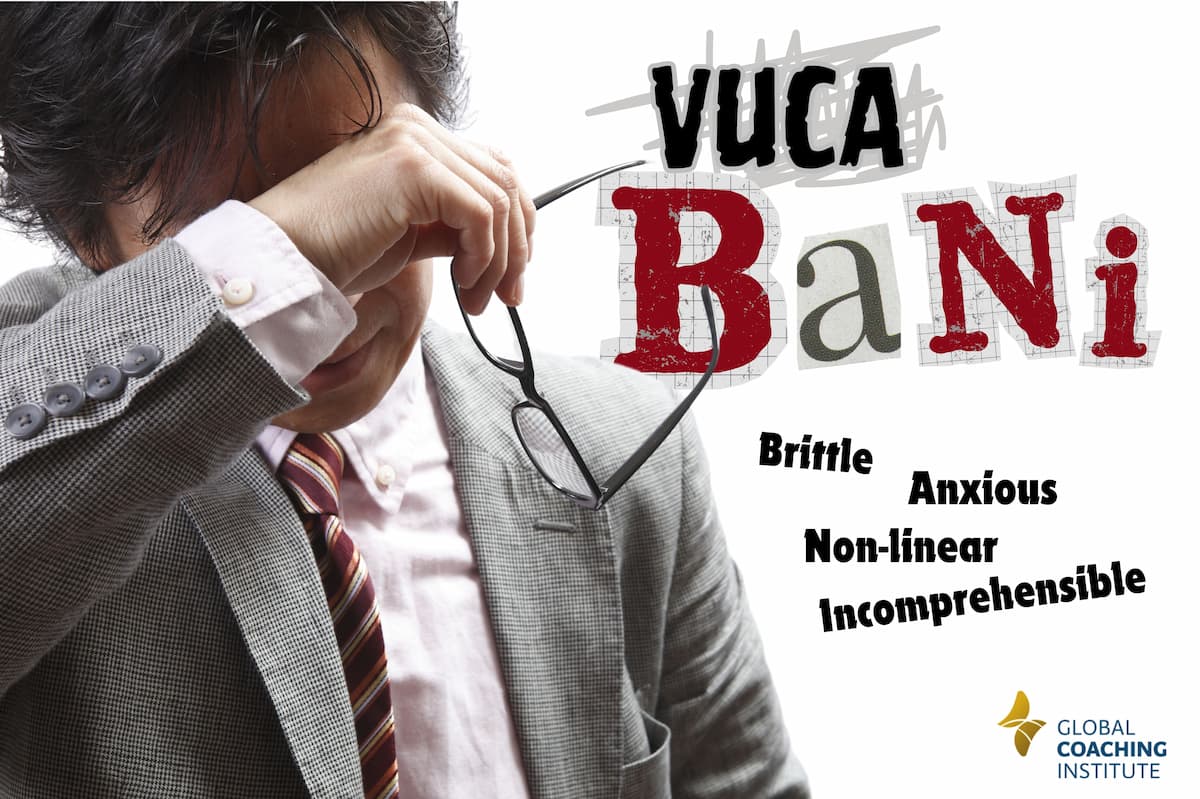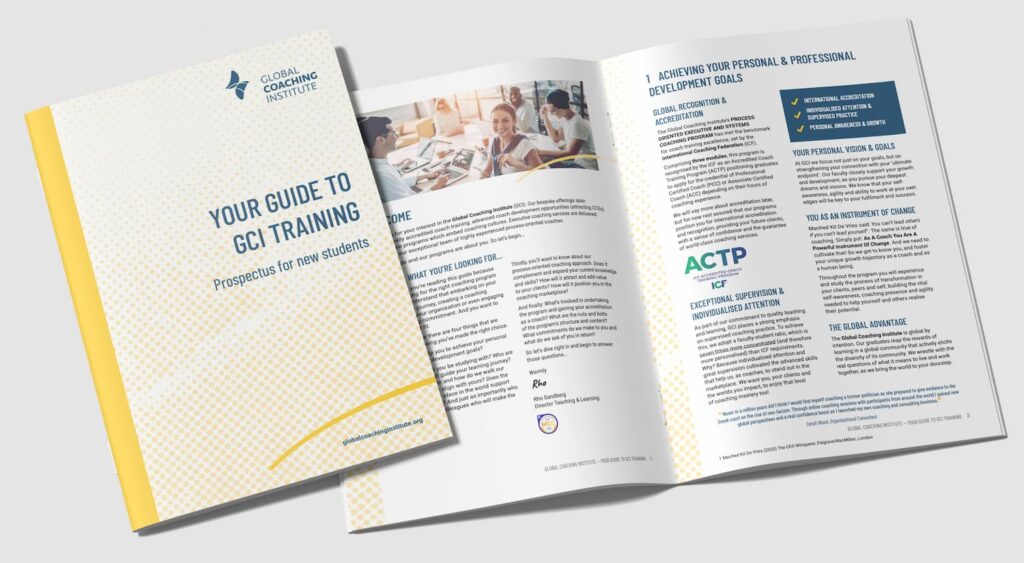One of the hallmarks of truly masterful coaches is the depth of their metaskills. It’s not simply a matter of what they do, but how they do it that is exceptional. They bring an agility to the coaching conversation that matches the client and the situation precisely.
As a coach, certain ‘feeling attitudes’ permeate our work. These underlying feelings can be identified, cultivated and developed as metaskills.
The coach’s metaskills are often what attracts someone to want to work with a coach. Either the client senses a complementary fit between their own learning style, attitudes and way of being and that of the coach – or they recognise that they need ‘something you have’ is a particular approach that they hope to cultivate in their own life.
What if you were able to bring both of these elements to your coaching practice? What if you knew how to match a client’s learning and bring the metaskills needed to unlock their unique situation? We believe that this is not only possible, but essential to standing out in a crowded coaching marketplace.
So let’s take a look at how to develop greater agility in the application of metaskills and how to unlock some truly amazing coaching outcomes.
Metaskills And Your Coaching Style
Coaches demonstrate meta-skills that reflect their own style. Some coaches have a more confrontational or directional style, while others may be more open or gentle in interactions. Some coaches are more cognitive and analytical, more intellectual or scientific. Others are more feeling-oriented or intuitive and spontaneous. Finding your natural style and cultivating it will give you a distinct advantage as you move forward with your practice. It will help you to discover your niche.
Metaskills And The Client
Each coaching client brings their own psychology to the coaching conversation. Some people require high levels of support and encouragement from their coach as they take small, tentative steps toward change. Others thrive on challenge. They want to be stretched and quickly become bored if the pace is too slow.
Working out the best metaskill for the situation is a combination of contracting with the client about their preferred approach and keeping a very close eye on their non-verbal feedback to sense how they are responding to your approach.
Metaskills And The Moment
There are different phases of a coaching conversation. Some of them explore the known world. At other times, coaching may take the client outside their comfort zone. In those uncomfortable moments when we need our metaskills to do the heavy lifting.
When a client is at an edge, a patient, appreciative and strength-based way of working may be called for. But it is a mistake to think that only one set of metaskills is needed for working with a client. Masterful coaches are like jazz musicians who are able to shift tone and tempo, based on what is happening around them. Developing a range of metaskills and closely following the cues of the client are key to unlocking their full potential- and yours.
Metaskills And The Coaching Context
Certain coaching situations, lend themselves to specific ways of working or metaskills.
Sometimes you need to focus on the element which is being habitually neglected or preferred by the client. Take for example a client who has a reflective learning style, but is less skilled in committing to actions and following through. In this case, the client will benefit from a style which emphasises accountability. You may need to adopt a metaskills which is firm or potentially even confronting.
However, you must also be careful not to get pulled into the vacuum, to start directing the client or acting like their parent. In addition to adopting more bounded and outcome-oriented metaskills, you can ask questions that encourage the client to reflect more broadly on what is needed and how they can hold themselves accountable.
Conversely, in an organisation that is action-oriented, a more reflective style may be needed. As you can see, each situation requires a different metaskill or feeling attitude from the coach. One type of style doesn’t preclude another – in fact all are needed.
Metaskills And Modelling
In the face of resistance or force of habit, you need to understand a range of different approaches and their potential. Otherwise, you are at risk of getting caught at the same edges that limit your client. The skill here is to be able to step back and forth between seemingly disparate ways of being, to match the client’s preference and to model diverse ways of being.
Sometimes the coach’s modeling is so subtle that it can be thought of as a micro-intervention. For a client who is focused on the issue at hand, your metaskills have the ability to operate at a subconscious level. Just by modeling behaviours which are uncomfortable for the client, you can create a sense of permission and possibility in them.
Metaskills And The Coach’s Edges
In order to be fluid in your use of metaskills, you need to be aware of your own edges.
Get to know what you are comfortable with and what you have barriers to. For instance, as a coach you may feel internal pressure to attain results. If so, you may struggle to adopt a more open, non-linear approach. But being non-linear may be precisely what enables your client to link seemingly disconnected pieces of the puzzle and achieve fresh insights.
Once you have mastered the core skills of coaching, much of your personal and professional development lies in learning to become more fluid within yourself. Here are some questions to ask yourself on your journey towards masterful coaching:
-
Where do your edges lie?
-
Are you able to adopt a broad range of styles of working or are there some styles that you feel uncomfortable with?
-
How do you manage this when those uncomfortable styles are needed within the coaching system?
-
How can you cultivate your own agility and broaden your repertoire of coaching metaskills?
Feeling States Exist Within A Field
Metaskills result in and are closely linked to feeling states. On occasion, we notice feelings that don’t seem to belong to us as coaches. They may belong to the situation or even to the client. For instance, if you are usually a highly related coach, you may find yourself feeling a little bored with the client’s narrative. This can be an indication that the client is stuck in their story and is a little bored by it themselves! By knowing your primary style and learning to notice when inconsistencies arise, you can use that information to inform your interventions.
Notice what signals you pick up. You may notice subliminal cues from the client that can help you access your deepest intuition. This level of phenomena is mysterious. Complex systems theory and quantum mechanics refer to the field as the energetic system created when two people, a team or community come together. Even an individual is a field – each of us is an ecosystem composed of different parts interacting. The signals we receive inside and out give us access to important information about ourselves, the client or their system.
Stay alert you to the non-linear effects of the field and your own feeling states. They can belong to you and/or the field. And they can be meaningful.
To learn more about coaching metaskills check out our Coaching Untapped Potential program, in which coaches learn to apply these principles and adopt the precise metaskills called for in each situation.




